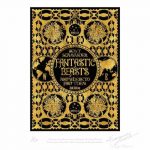“Harry Potter: A History of Magic” and Plant Lore, Part Two: Bubotuber Pus and the Doctrine of Signatures

Oct 06, 2018
Art, Books, J.K. Rowling, Jim Kay, News
Harry Potter: A History of Magic is now open at the New York Historical Society. Though the New York City exhibition contains different elements (Brian Selznick’s 20th anniversary illustrations for Scholastic and Mary Grandpré’s cover art, for example), it gives the same profound revelations of the mythology, lore and history which inspired J.K. Rowling when writing Harry Potter, and ways in which we can see magic throughout Muggle history.
Dr Beatrice Groves – publisher of Literary Allusion In Harry Potter and Potter-expert who previously analysed the exhibition when it appeared in London – is taking us through the exhibition through the lens of plant lore, looking into how J.K. Rowling’s world of plants, potions and magical lore was inspired by muggle herbologists. Continuing to look at Rowling’s use of Culpeper’s Complete Herbal and the Doctrine of Signatures, Groves investigates the traces of Culpeper in the Strike series, in Jim Kay’s Diagon Alley, and in draughts, potions and beyond.

Rowling has spoken twice, as some length, about how she has been influenced by Culpeper’s Complete Herbal (1652). She has also left other clues to its importance. For example the name turns up in her alter-ego’s Strike novels: Dominic Culpepper, an ex-News of the World journalist, appears in Silkworm, Career of Evil and the most recent Lethal White. Jim Kay, likewise, drawing on the importance of the Complete Herbal to Harry Potter, adds Crispa Culpepper’s shop for ‘drug preparations’ to his illustration of Diagon Alley in Chamber of Secrets. (In both cases Galbraith and Kay chose the more suitable-for-a-herbalist punning spelling of the name – ‘Culpepper’.)
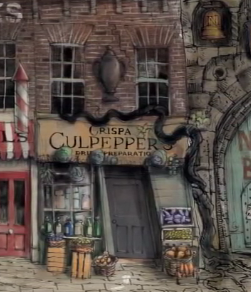
Until relatively recently Muggles could also shop in ‘Culpeper’s’ for herbal lotions and potions. This chain of shops (established in 1927) did much to raise popular awareness of both Culpeper and the medicinal powers of herbs and I wonder if Rowling, like myself, enjoyed spending her pocket money there on sachets of dried lavender and pine needle bath foam.
Rowling’s most recent discussion of Culpeper focuses (to my delight) on the style of Culpeper’s writing, as well as the content:
“It’s not even the properties of the plants, it’s just the way they wrote about the plants and observed them and tied them planetary movements and so on. There’s such a poetry to it. Ah yes, ‘it is fat, unctuous and temperate, generated of that which is moist, aerious and moderately hot’ [laughs]… Even when I didn’t really use what they were saying, I found it inspirational, I found the way they talked about these plants inspirational. (This is a gorgeous book. Look at this.) And sometimes I would use old names to make my own names. You know, just look at the way they put words together. ‘Colewort’ [laughs]. Love it.”
‘There’s such a poetry to it:’ Rowling vividly responds to the way Culpeper writes here and there is one passage in Potter in which she explicitly pastiches it. Harry is reading in his Charms book about the ‘uses of scurvy-grass, lovage and sneezewort’ and we are given an unusually extended quotation from this textbook: ‘These plants are moste efficacious in the inflaming of the braine, and are therefore much used in Confusing and Befuddlement Draughts, where the wizard is desirous of producing hot-headedness and recklessness…’ (Phoenix, Chap 18). Rowling parodies Culpeper here – and mimics seventeenth-century spelling with the extra terminal ‘e’ on ‘moste’ and ‘braine’ – in a rare moment in which the prose tries out a formal literary effect. As Harry falls asleep snippets from this text recur in his mind – Sirius’s ‘recklessness’ and how ‘confusing’ his situation is and how ‘desirous’ he is of sleep – in a way that mimics his own sliding into unconsciousness.
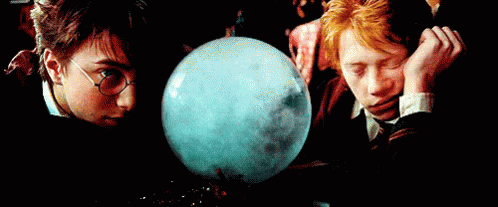

In creating her Confusing and Befuddlement Draughts Rowling was clearly drawn to the evocative names of these herbs (scurvy-grass, lovage and sneezewort all have familiar words tucked up inside them) but she also borrowed their traditional properties. The ‘inflaming’ and ‘hot-headedness’ of their action within Harry Potter responds to Culpeper’s designation of them as ‘hot.’ Culpeper notes that scurvygrass has ‘reddish seed, tasting somewhat hot,’ that lovage likewise is ‘of a hot, sharp, biting taste’ and sneezewort ‘has a hot biting taste.’ The ‘hot’ nature of these herbs is echoed by their dominant planet – lovage is ‘an herb of the Sun’ – and their related medical usage: lovage ‘warms a cold stomach’ while sneezewort can be used ‘to correct the coldness of other herbs.’
It is in her Polyjuice Potion that Rowling most explicitly uses Culpeper’s belief in the correlation between the nature or name of a herb and its effect:
“I remember creating the full list of ingredients for the Polyjuice Potion. Each one was carefully selected. Lacewing flies (the first part of the name suggested an intertwining or binding together of two identities); leeches (to suck the essence out of one and into the other); horn of a Bicorn (the idea of duality); knotgrass (another hint of being tied to another person); fluxweed (the mutability of the body as it changed into another) and Boomslang skin (a shedded outer body and a new inner).”
Rowling draws attention to the way in which the names of her plants – knotweed, fluxweed – echo the effect of Polyjuice potion. But the connection is not confined to the name. Culpeper writes that knot-grass effectively knits together ‘broken joints and ruptures’ and that fluxweed is so called ‘because it cures the flux, and for its uniting broken bones, & Paracelsus extols it to the skies.’

The doctrine of signatures, however, is not confined to Polyjuice Potion or Befuddlement Draughts. If you dig down into most of Rowling’s potions you will find ingredients that echo the effect of the potion. What ingredient is on the work bench (busily being flicked at Ron and Harry by Malfoy) when they are making Swelling Solution for example? Puffer fish eyes (the eyes of a fish that ingests water and swells up as a response to attack). Meanwhile, squeezing the liquid-filled swellings on Bubotubers is just like squeezing spots (right down to the icky satisfaction of it), and what is its pus used to cure? Acne, of course.
Bradley C. Bennett’s scholarly dissection of the doctrine of signatures notes that it was first recorded in Pliny’s Natural History but found its greatest adherent in the physician and alchemist Paracelsus. Paraclesus espoused the position similia similibus curantur (‘like cures like’) and believed that God marked plants with signs to indicate their use: ‘the soul does not perceive the external or internal physical construction of herbs and roots, but it intuitively perceives their powers and virtues, and recognizes at once their Signatum.’ Paracelsus (who as you may have noted above is frequently – and warmly – name-checked by Culpeper) is, of course, someone who turns up on Chocolate Frog cards and as a bust in Hogwarts. As Emily Strand thinks that the presence of Paracelsus in Hogwarts points directly to the doctrine of signatures (many thanks to Emily for showing me this article prior to its forthcoming publication!):
“Interestingly, as if to confirm this reliance on the doctrine of signatures, Rowling slips the name Paracelsus into her books early on, more than once, implying that this real-life Swiss physician and alchemist (1493-1541), well-known to Muggles as a key advocate of the doctrine of signatures, was actually quite an important wizard too. With great subtlety, this name-drop, which claims Paracelsus for the wizarding world, implies that the notion of allowing the “small” to point to the “big,” as Paracelsus and others put forth in the doctrine of signatures, is a magical concept.”
Indeed Oswald Croll, Culpeper’s contemporary and follower of Paracelsus, notes the magical aspect of the doctrine of signatures: ‘herbs magically by their signature… manifest their interiors, concealed in the occult silence of Nature.’
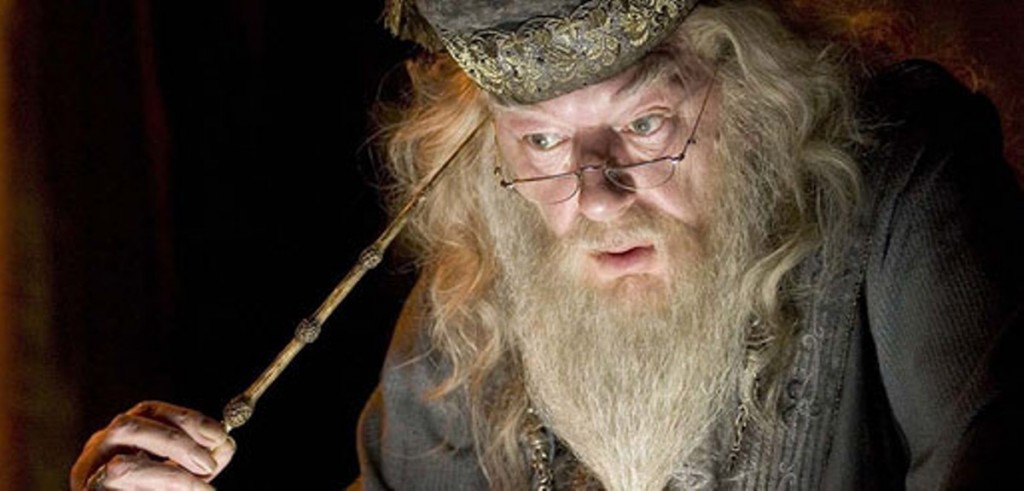
William Coles, another of Culpeper’s contemporaries, describes the doctrine of signatures but also notes a problem with it: why did God only leave these occasional signs of the efficacy of certain plants, not on all of them?
“The Signatures likenesse are taken notice of, they being as it were the Books out of which the Ancients first learned the Vertues of Herbes; Nature or rather the God of nature, having stamped on divers of them legible Characters to discover their uses, though he hath left others also without any, that after he had shewed them the way, they by their labour and industry, which renders every thing more acceptable, might find out the rest.”
There is a strikingly Dumbledore-ish quality to Coles’s God here: he leaves just enough clues and leaves man to work out the rest by themselves. It is a parallel I rather like for it is explicitly pointed out (at the end of both the first and last Harry Potter books) that Dumbledore gives pointers rather than answers: ‘he’s a funny man, Dumbledore… he just taught us enough to help.’ Harry’s comfortable faith in Dumbledore in the opening book is tested in the final novel, in which Harry finally kicks against the idea of being ‘showed the way’ but being left alone to ‘find out the rest.’ By the end of the novel, however, he finds out that he was following a ‘secret path laid out for them by Dumbledore’ (Deathly Hallows, Chap 18) all along.
The doctrine of signatures, perhaps, runs even deeper in Harry Potter than we have realised.
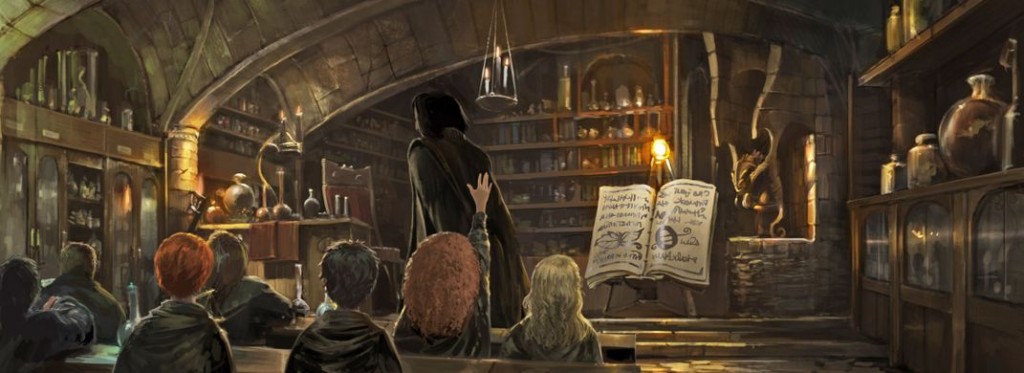
Stay posted for more of this in-depth analysis of plant lore in Harry Potter, in celebration of the New York opening of Harry Potter: A History of Magic! Book your tickets to the exhibition at the New York Historical Society website, read more about the documentary (which is now available on DVD), the official book of the exhibition, and Dr Groves’ previous analysis of the exhibition in London for more exciting insights. Also be sure to check out Dr Groves’ book, Literary Allusion In Harry Potter, and follow her on Twitter!
Let us know your thoughts via Twitter, Facebook or Instagram!

